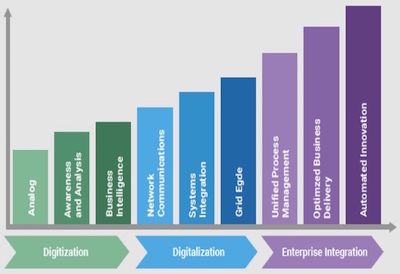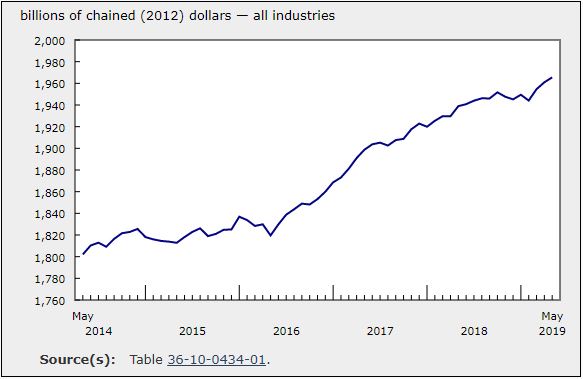Transitioning the Role of the President

As a company matures, the needs of the organization change. The role of the president must evolve if the organization is going to grow in revenue, territory and influence. In order to successfully navigate this transition, the leader must be able to pull back from daily functions and take on a more strategic role with a heavy emphasis on personnel structure and development. While I am not suggesting that this notion is either new or revolutionary, it is often easier said than done. If growth is going to occur, the leader must fight the urge to fall back into a direct managerial stance.
In the early years of any organization, the president must wear many hats. A good friend of mine used to refer to himself as the “head cook and bottle washer” in his company. In most organizations, the leader is the driving force in sales. In the distribution world, most presidents came from the role of sales in another company. Their competitive nature drove them to splinter off and do something on their own. They had cultivated a following of loyal customers that would surely follow them into this new venture. Rude awakening number one. That being said, some followed and customer relationships became priority number one.
In order to feed the sales effort, the president had to secure vendor relationships and learn how to purchase products effectively. Rude awakening number two. The purchasing and managing of inventory is a little more challenging than most sales people think. There are minimums and freight considerations. Terms of sale and cash flow are now part of the landscape. Sadly, this is what takes most new distribution companies down. They rarely die due to a lack of sales.
If the new entity is to survive, the president must learn the financial side of the business. As mentioned above, accounting is usually not the strong suit of most sales professionals. Some of the most successful companies I have encountered were started by a partnership between one financially minded individual and one sales dynamo — provided that they don’t kill each other in the first six months. Although many newer companies start with a bookkeeper, the president must be able to provide financial direction to this individual. It is a rare bookkeeper that can advise on financial strategy.
I could continue down the list of functions, but I think you get the idea. The president of a small company tends to engage in a daily game of “Whack a Mole” just to keep the doors open. Just thinking about it is exhausting and not sustainable. In order to create long-term viability, the leader must begin to rely on other members of the organization. The more control a leader is willing to give up, the faster an entity will grow. They learn the delicate balance of staying in touch while keeping their fingers out of the pie. Obviously, the calibre of people surrounding the leader will assist in the transition.
If the president is ready to make the move, recruiting will take a large portion of their time. Leaving the recruiting of key individuals up to an HR person is a mistake. Rarely is anyone as passionate about the organization as the president. The prospective candidates have to see this. Recruiting is not about filling slots. It is about provoking an emotional response in the candidate. You have to plant the seed of doubt in really good prospects. They have to walk away believing that their current position isn’t as great as they once thought.
Where to start depends on the deficient skills of the president. If they are not great with numbers, or just really hate working with them, then shoring up the financial leadership should be top priority. I have spoken to several presidents who said that hiring their CFO was a breath of fresh air. It was like a tremendous weight was lifted. Some financial candidates come from big accounting firms; others come from the banking community. The good ones seem to have a desire to roll up their sleeves and find a place where they can make a difference. Make sure that they fit your company culture. President: “What is two plus two?” Prospect: “What do you want it to be?” President: “We’re going to get along just fine.”
Operational management tends to be another area where the president needs to hand over the reins. This one may be a bit more difficult due the customer service element of the function. Although I have seen several excellent ops managers recruited from outside the company, these folks tend to be home grown. If the latter is the case, the president must fight the urge to create a “mini-me.” The manager must be given the latitude to try new methods and ultimately take ownership of the fulfillment process. I would also suggest that the president find several outside educational opportunities for the person. These can range from visiting other companies to attending seminars.
One of the most challenging tasks is to introduce a layer of sales management between the president and sales personnel. If the leader came from the sales side of the business, they will have a tough time letting go. The introduction of a sales manager can really stimulate the effort. Don’t make the same mistake I have seen countless times. Your best sales person is not going to be the best sales manager. The things that make them a competitor in the field don’t easily transition into a coaching role. Sales management requires data analysis skills — something the top dogs rarely want to fiddle with. Do yourself a favour and look for someone who can support strategically, rather than someone looking for the glory. It may be necessary to look outside your company for the best candidate.
As a company evolves, the president should move away from trying to run the business and focus on the people in the organization. Coaching and organizational development activities tend to become the norm. I love to see these folks work on building a bench of talent or develop a farm system, to steal a baseball analogy. I have often seen great presidents refer to themselves as “motivator in chief” or “destroyer of the status quo.” These folks have made the transition. No longer do they want to focus on the daily activities. They have cultivated an executive management team to do this. They poke holes in the system. They become more visionary and less tactical.
As leaders becomes more visionary, they often find it difficult to discuss their thoughts with others in the company. Changes are often tied to personal finances and this can produce fear in some. It can get lonely at the top of a privately held company. There are resources out there if you are willing to look. Join an executive group. Create an advisory board. Hire an executive coach. Okay, I admit the last one was a little self-serving. The point is that you do not have to go it alone. Many before you have made the transition and I am sure there are several who would be more than willing to offer some advice. As always, I am here to help. Good luck.
Jason Bader is Managing Partner of The Distribution Team, a firm that specializes in helping distributors become more profitable through strategic planning and operating efficiencies. The first 20 years of his career were spent working as a distribution executive. Today, he is a regular speaker at industry events and spends much of his time coaching individual distribution companies. For more information, call (503) 282-2333 or contact him by e-mail at Jason@Distributionteam.com. Also visit The Distribution Team’s website at www.thedistributionteam.com.











